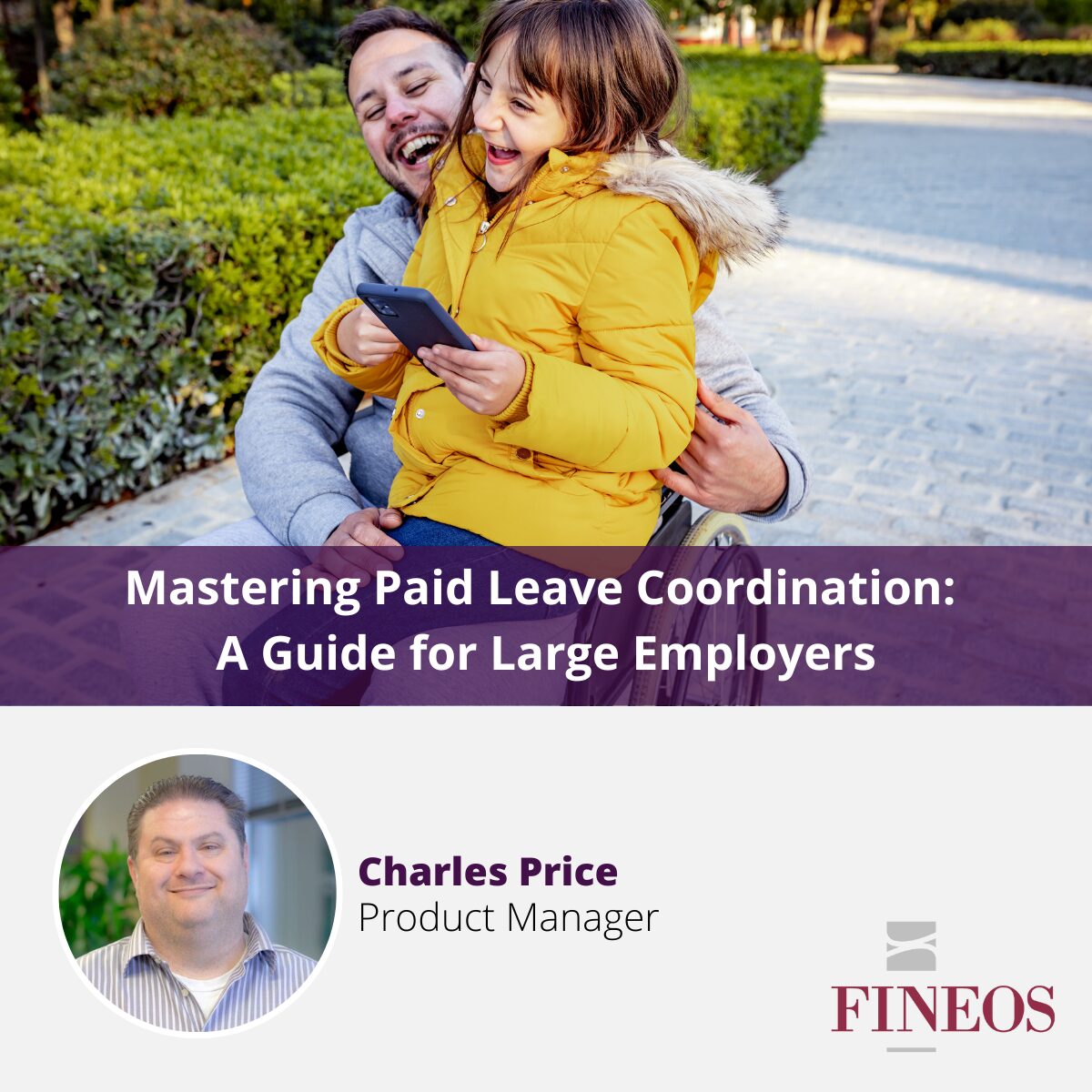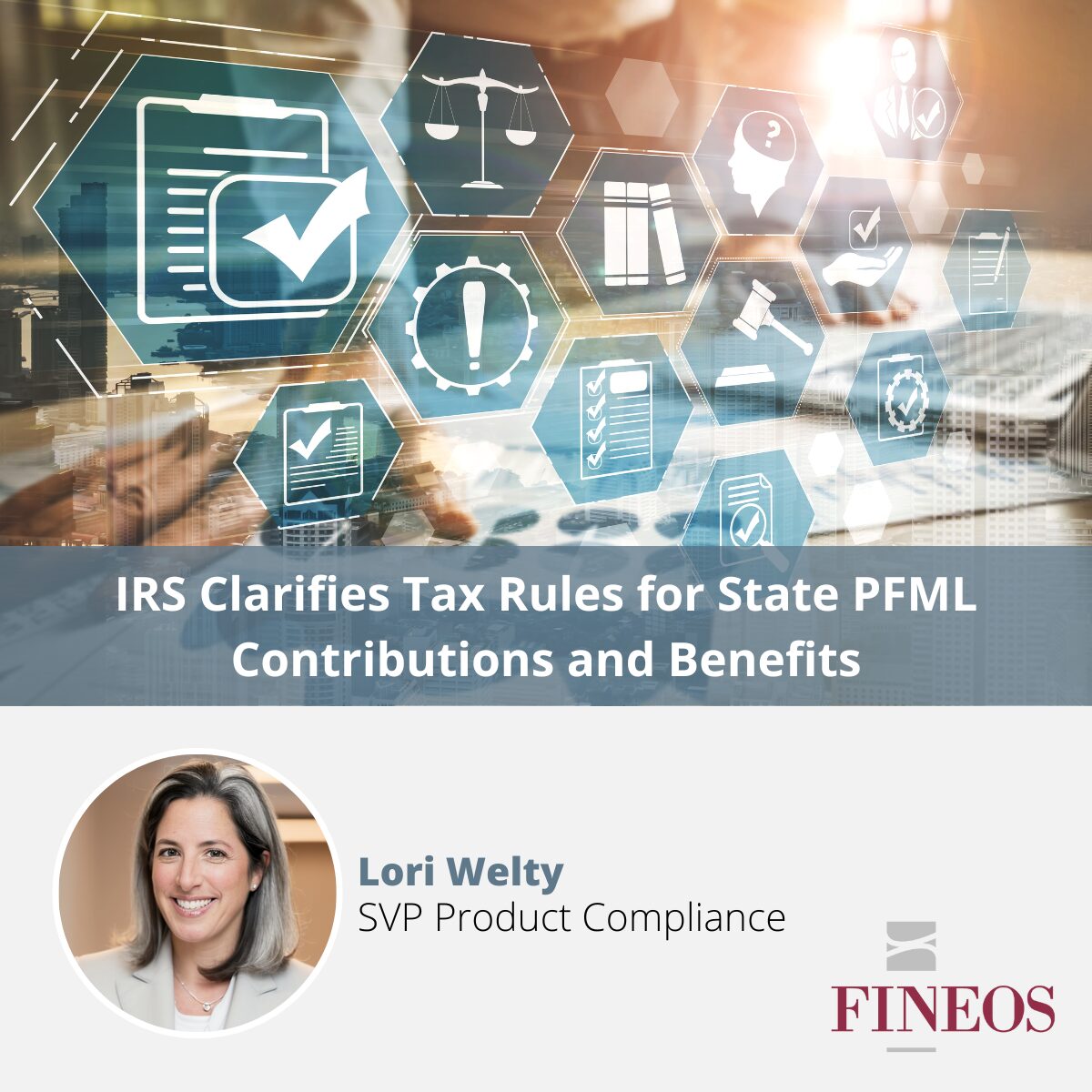We are off to a strong start in 2025 with significant pieces of guidance from two federal agencies this week. We wrote last week about the new IRS Guidance on PFML payments. Today we bring you information on the January 14 Opinion Letter issued by the U.S. Department of Labor (DOL) addressing the interaction of paid family and medical leave (PFML) and the Family Medical Leave Act (FMLA).
Background
As PFML laws have expanded, their interactions with existing paid and unpaid entitlements have been a source of confusion. Employer policies and laws – state and federal – have overlapping but distinct coverages, leading to a patchwork of entitlements. A single absence can be covered by a half-dozen absence laws at various times during the leave.
The DOL’s Opinion Letter has provided some clarity on the layering of the federal Family Medical Leave Act (FMLA) with state PFML programs. Federal law provides that when the FMLA applies, either the employee or the employer can choose to substitute accrued paid leave for FMLA leave. Helpfully, the law provides the applicable definition of “substitute,” which notably deviates from the commonly understood meaning. While most often understood to “replace one thing with another,” in this context, substitute means “that the paid leave provided by the employer…will run concurrently with the unpaid FMLA leave.” It is significant to note that the parties cannot agree to replace an employee’s FMLA leave with accrued employer-paid benefits: if the FMLA applies, the leave must be so designated.
If the employee has both employer-provided paid leave and disability or workers’ compensation benefits, the employer and the employee can mutually agree (where allowed by state law) to apply the employer-provided paid leave as a supplement to the disability or workers’ compensation benefits. Unlike during an unpaid FMLA leave, neither party can unilaterally make that election.
New Guidance
The DOL has clarified that in this context, state PFML benefits are treated the same as disability or workers’ compensation benefits: if an employee receives benefits from a state PFML program, the FMLA substitution rule does not apply to the portion of leave that is paid. This means that neither party can unilaterally elect to draw on employer-provided paid leave to supplement an employee’s pay during the part of the leave that is paid by the state program. The parties can mutually agree (if allowed by state law) to use the employer-provided paid leave to supplement, or “top up” the PFML payments.
The DOL noted that there may be instances where the paid benefits do not cover the full duration of an FMLA leave, and in those cases, the substitution rule applies to the unpaid portion. Either the employee or the employer can choose to apply accrued employer-paid benefits during that timeframe.
The DOL also provided a helpful reminder that as always, if a leave qualifies as FMLA leave, it must be designated by the employer as FMLA leave and counted against the employee’s FMLA leave entitlement, even if it is also covered by another leave entitlement. And if a leave does not qualify as FMLA leave, the employer may not count the leave against the employee’s FMLA leave entitlement, even if it qualifies under another leave entitlement.
Impacts on Leave Stacking
While this Opinion Letter is consistent with the DOL’s treatment of disability and workers’ compensation benefits, there are a few implications to be aware of. Some state PFML programs allow an employee to delay use of their paid benefits to stretch their entitlements further, while some also permit an employer to require the use of PTO prior to PFML benefits. In a state that allows it, an employee with accrued paid PTO could choose (or be required) to delay application of the state PFML law, applying their PTO first (a form of leave “stacking”). This allows the employee to stretch their pay and job protection an additional two weeks, or an employer to force the employee to use their accrued employer-paid benefits during this time. For that period in which the application of the PFML is delayed, the FMLA substitution rule would apply, allowing either party to elect the use of the accrued employer-paid benefits.
| State | Can Employee Choose to use Employer Benefits before using PFML? | Can Employer Require Employee to use Employer Benefits before using PFML? |
| California | Yes | No, as of 1/1/2025 |
| Colorado | Yes | No |
| Connecticut | Yes | Yes |
| Delaware | No | Yes (up to 75% of accrued time). PTO use can count towards the length of DE PFML |
| D.C. | Depends on Employer policy | |
| Maine | No | No |
| Maryland | No | No |
| Massachusetts | No | No |
| Minnesota | Law is silent | |
| NJ FLI | Yes | No |
| NJ TDI | Yes | Yes, if PTO and sick leave are separate |
| New York | No | No |
| Oregon | Yes | No |
| Washington | Yes | No |
Unintended consequences: What about coordinating increments?
While the DOL Opinion Letter discussed how pay should be coordinated, absence wonks will note that it was silent about another important PFML program element: the absence itself and how it is to be taken. Another consideration: when substitution is permitted and elected, the employee is then subject to the rules of an employer’s leave policy, which may vary from the FMLA. See 29 CFR § 825.207. For example, under the FMLA an employer cannot require an employee to take leave in a minimum increment of more than one hour. However, employers can enforce longer minimum increments under their own leave policies. If the employer enforces a larger increment for its paid leave policy, and an employee elects to concurrently run the employer-provided leave with FMLA, the employee can be required to abide by the larger increment. The key is that, in this scenario, the employee must have the option to decline the substitution of PTO and take FMLA leave in the smaller increment:
Where an employer’s paid leave policy requires the use of such leave in an increment of time larger than the amount of FMLA leave requested by an employee, if the employee wishes to substitute paid leave for unpaid FMLA leave, the employee must take the larger increment of leave required under the paid leave policy unless the employer chooses to waive that requirement. The employer is not required to permit the employee to substitute paid leave for the smaller increment of unpaid FMLA leave… Where an employee chooses to take a larger increment of leave in order to be able to substitute paid leave for unpaid FMLA leave…the entire amount of leave actually taken is protected under the FMLA and may be counted against the employee’s FMLA entitlement. Supplementary Information to the 2008 Final Rule, 73 FR 67934
Technically, this means that an employee with an FMLA leave that is partially covered by the substitution rule (due to an election of coverage or exhaustion of the PFML benefits) could be required to take leave in larger increments during the period in which substitution does apply (if the employee elects) and smaller increments when it does not (if there is not mutual agreement for substitution). Practically speaking, this is an administrative nightmare and a factual improbability, but for absence geeks, it presents an interesting scenario.
FINEOS can help you stay up to date!
It’s critical to stay informed, especially when legal developments are fluid. FINEOS receives legislative and agency updates multiple times a day and synthesizes the information as it arrives to help our clients maintain compliance. Find out how to simplify the complex with our Integrated Disability and Absence Management (IDAM) solution.


